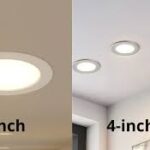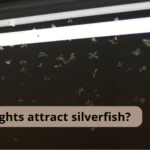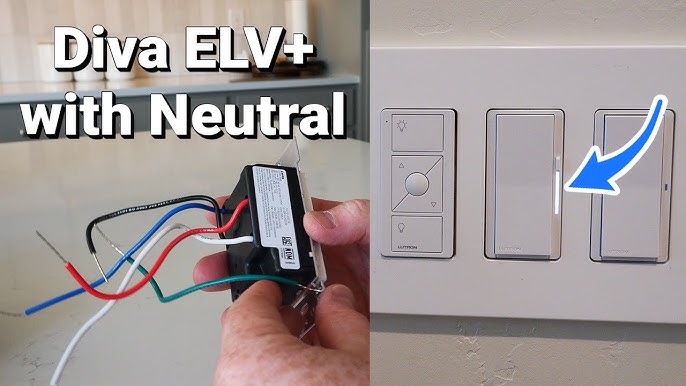Contents
Basics: what is ELV dimming means
- ELV stands for Electronic Low Voltage dimming. It refers to a dimming method for lighting loads that use electronic transformers (rather than magnetic) and low-voltage supplies (often 12 V or 24 V) or LED drivers designed for trailing-edge (reverse phase) dimming.
- In phase-cut dimming systems, we normally distinguish leading-edge (forward phase) dimming and trailing-edge (reverse phase) dimming. ELV essentially is the trailing-edge type.
- The waveform: rather than cutting the beginning of each AC sine wave cycle (leading-edge), the dimmer cuts the end of each half-cycle (trailing‐edge) when controlling the load. This tends to give smoother behaviour for electronic loads.
- From the glossary: “ELV dimming … is a dimming technology … for light fixtures that employ electronic transformers. … The dimmer cuts the trailing edge of the power wave … Also known as electronic or trailing edge dimmers.”

How it works (technical overview)
A dimmer is inserted on the mains (line) side of the load. With ELV dimming, when the AC sine wave reaches the zero-crossing (or near it) it begins conduction, and then at some angle later in the cycle it is switched off, resulting in less total voltage/energy delivered to the load. ⟶ a “reverse phase” or trailing-edge cut.
Because many electronic transformers (for low-voltage halogen or LED loads) have capacitive input characteristics, trailing-edge is better matched to them than leading-edge dimmers (which may cause voltage/current spikes).
The transformer/driver receives the chopped waveform and then converts to the appropriate DC low‐voltage output. The dimming effect is achieved by reducing the RMS voltage or effective power delivered, thus reducing LED brightness or halogen brightness accordingly.
Unlike legacy incandescent dimming (simple resistive drop or phase-cut for halogen) LED loads and electronic drivers require the driver/dimmer/transformer combo to be compatible. If the driver isn’t designed to accept phase-cut, performance may suffer (flicker, limited dimming range, buzzing)

When and where to use ELV dimming
- Good usage: Low-voltage lighting systems (12 V or 24 V) where there is an electronic transformer / driver (rather than a simple magnetic transformer). For example: LED MR16 lamps using an electronic driver, LED strips driven via a constant voltage driver, or similar fixtures labelled “ELV” dimmable.
- Residential retrofit situations: Many homes have halogen low-voltage systems. If switching to LED low‐voltage equivalents, using an ELV compatible dimmer/driver may be the right choice.
- When you need quieter, smoother dimming with LED fixtures, particularly where flicker or buzz must be minimized (e.g., living rooms, upscale installations).
- Comparatively less suited: Large commercial systems with dedicated 0-10 V or DALI control (those are different protocols). Also, if the fixture and transformer are magnetic low voltage (MLV), then a leading‐edge type may still be required; mixing ELV dimmer with MLV transformer can cause issues.
When and where to use ELV dimming
- Good usage: Low-voltage lighting systems (12 V or 24 V) where there is an electronic transformer / driver (rather than a simple magnetic transformer). For example: LED MR16 lamps using an electronic driver, LED strips driven via a constant voltage driver, or similar fixtures labelled “ELV” dimmable.
- Residential retrofit situations: Many homes have halogen low-voltage systems. If switching to LED low‐voltage equivalents, using an ELV compatible dimmer/driver may be the right choice.
- When you need quieter, smoother dimming with LED fixtures, particularly where flicker or buzz must be minimized (e.g., living rooms, upscale installations).
- Comparatively less suited: Large commercial systems with dedicated 0-10 V or DALI control (those are different protocols). Also, if the fixture and transformer are magnetic low voltage (MLV), then a leading‐edge type may still be required; mixing ELV dimmer with MLV transformer can cause issues.
PROS and CONS of ELV dimming
Pros
- Relatively simple installation (for two-wire dimmer systems) compared to full digital architectures (e.g., DALI) in many residential cases.
- Improved dimming performance (potentially deeper dimming range) when the LED driver is designed for it. Some sources state that down to low percentages (e.g., 1-4%) can be achieved with proper ELV dimmers/drivers.
- Better for LED loads: Since many LED drivers are capacitive in character, trailing edge dimming is better matched, reducing current spikes and stress on components.
- Smoother operation: Because the driver is electronic and the waveform is cut on the trailing edge, ELV tends to produce less audible noise (buzzing) and fewer compatibility issues with LED loads than older leading‐edge dimmer
Cons
- Cost & availability: ELV dimmers may cost more (or be less common) than basic leading‐edge dimmers, depending on market/country. Also, in some regions older wiring/practices may favour leading-edge systems, creating compatibility issues.
- Wiring/circuit issues: If the wiring runs are long, voltage drop or interference may affect dimming smoothness; also, mixing loads (LED+halogen) on same dimmer may challenge performance.
- Dimming performance at very low levels: Even if compatible, some LED drivers may only dim down to ~10% or 5% brightness; below that you may get flicker or cut-out. For example, some manufacturers list minimum dimming percentage of ~3-6% using certain dimmers.
- Minimum load issues: Many dimmers (even ELV types) have a minimum load requirement (wattage) to function correctly. When using very low wattage LED fixtures, the load may fall below the dimmer’s threshold, resulting in misbehaviour
- Compatibility is critical: If you use an ELV dimmer with a driver not rated for trailing-edge or ELV, you may experience flickering, buzzing, limited dimming range, or even driver failure. As the white-paper says: “Problems are caused by using forward-phase dimmers on capacitive ELV loads… proper pairing of the dimmer type and low-voltage transformer is essential.”
Steps to installing/choosing an ELV dimming system
Check your load
- Are you using low-voltage lighting (12 V or 24 V) with an electronic transformer or LED driver?
- Is the LED or fixture labelled “dimmable” and preferably “ELV / trailing edge compatible”?
Select the correct dimmer
- Choose a dimmer that is explicitly rated for ELV (trailing-edge) dimming. Some “universal” dimmers switch between leading and trailing edge but you must verify.
- Ensure the dimmer’s minimum and maximum load ratings match your total load (sum of wattages of all connected fixtures). Installation guides often provide minimum and maximum luminaire counts or wattage.
Driver/transformer compatibility
- Confirm that the LED driver or electronic transformer supports phase-cut dimming and is compatible with trailing edge (ELV) phase-cut.
- Avoid mixing magnetic low voltage (MLV) transformers with trailing‐edge dimming — if your existing system is MLV, you may need a leading-edge dimmer instead (or replace transformer).
Wiring & installation
- Typically you’ll have live (L) and neutral (N) wiring into the dimmer; no extra control wires are needed (unlike 0-10 V or DALI). However check local electrical code and manufacturer instructions.
- Ensure wiring lengths are within specification; avoid voltage drop or long runs that may interfere with dimming stability.
- At installation, test the full dimming range, check for flicker, buzzing, colour shifts, startup behaviour.
Testing & commissioning
- After installation, dim from high to low. Check the lowest setting for flicker or cut-out.
- If multiple fixtures are connected on one dimmer, ensure that total load is within spec and performance is consistent across all lights.
- If using multiple groups or zones, verify each behaves as expected and none are incompatible.
Troubleshooting
- Flicker or buzzing → likely mismatch of dimmer/driver or insufficient load.
- Lights not turning fully off or not dimming low → driver might not support deep dimming or dimmer min load not met.
- Flicker at low setting only → consider swapping dimmer or driver for one supporting deeper dim.
- Mixing legacy halogen + new LED on same dimmer → may cause inconsistent behaviour; better to separate circuits or use a “universal” dimmer rated for mixed loads.
Review & practical verdict
In summary: ELV dimming is a very good dimming solution for many modern lighting installations — especially when using LED fixtures with electronic drivers and low-voltage systems. It offers smoother, quieter dimming and is well suited to high-quality residential lighting or retrofit projects.
However, the “devil is in the details”. The success of the system depends heavily on compatibility between dimmer + driver + load. If any component is mismatched (e.g., driver not rated for ELV, dimmer designed for leading‐edge only, too low load), you’ll get poor performance.
READ ALSO: How to dim a light bulb without a dimmer?










![Daylight vs Soft white [5+ principal distinctions] Daylight Vs Soft White: Best Helpful Compare & Pros | Corn](https://howtolightguide.com/wp-content/uploads/2024/02/light.jpg)
![What is RGBIC? [a detailed breakdown 2024] What Is RGBIC: Top 4 Factors & Best Guide | Helpful Review](https://howtolightguide.com/wp-content/uploads/2024/02/howtolightguid.jpg)